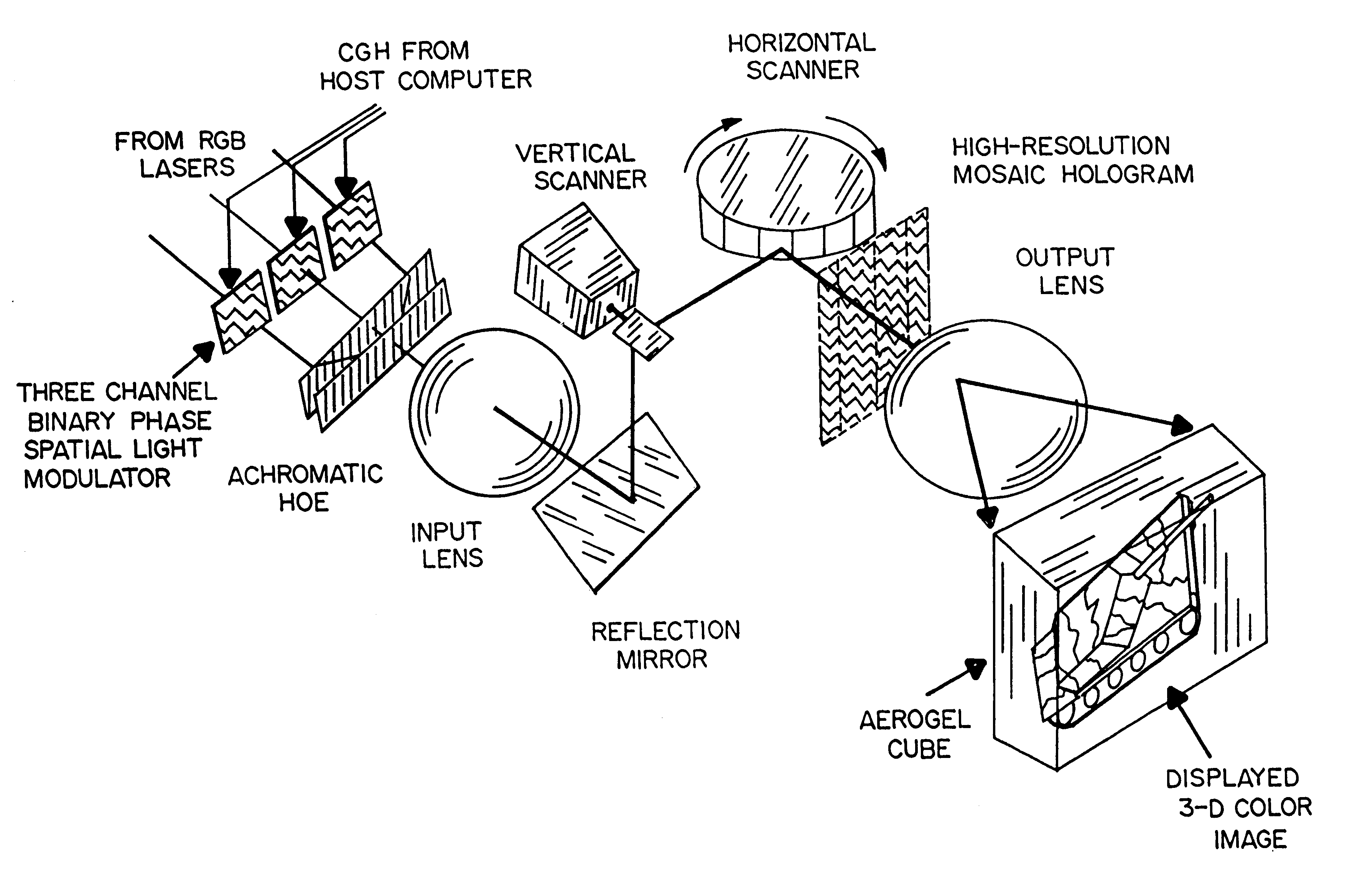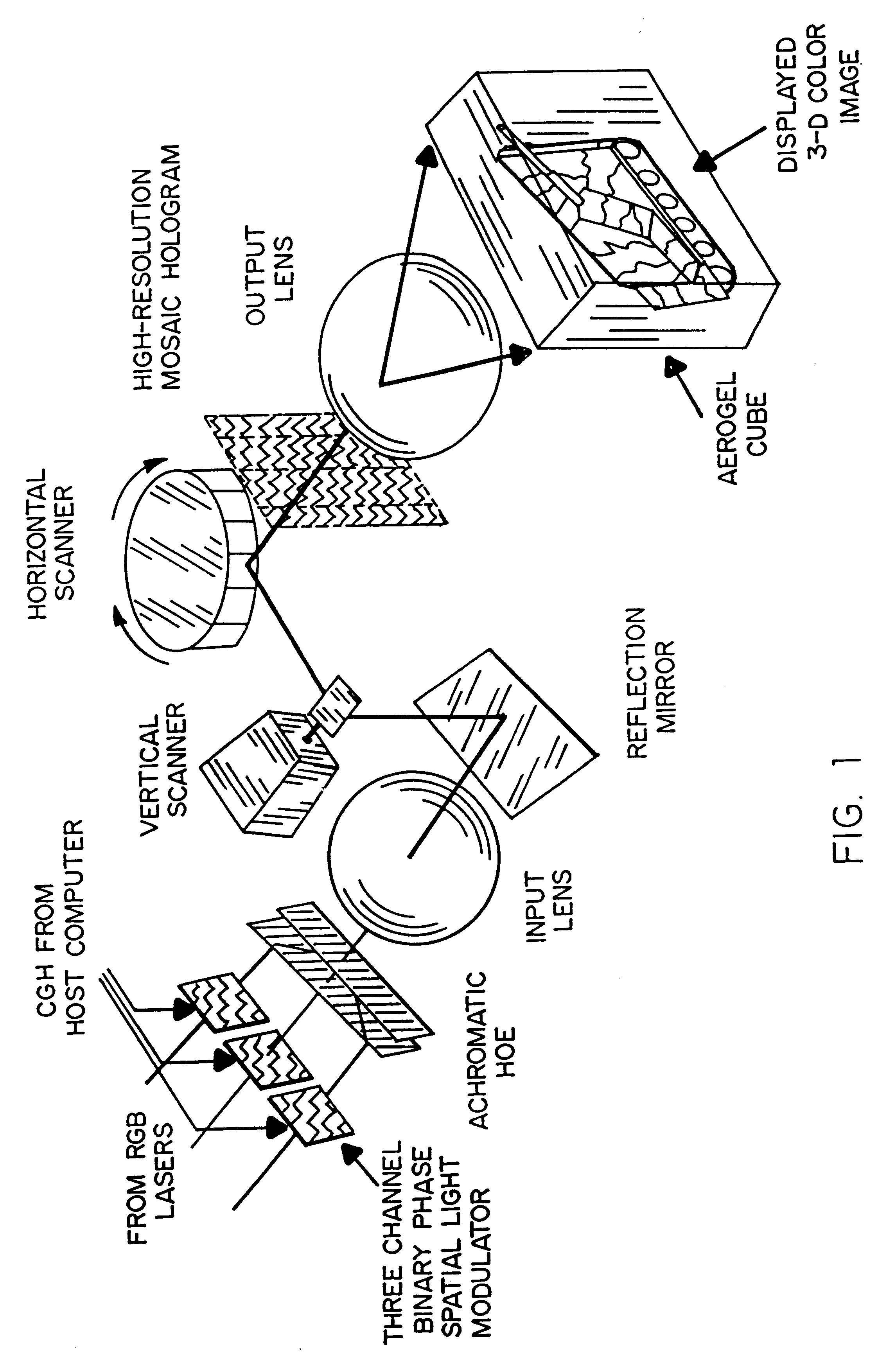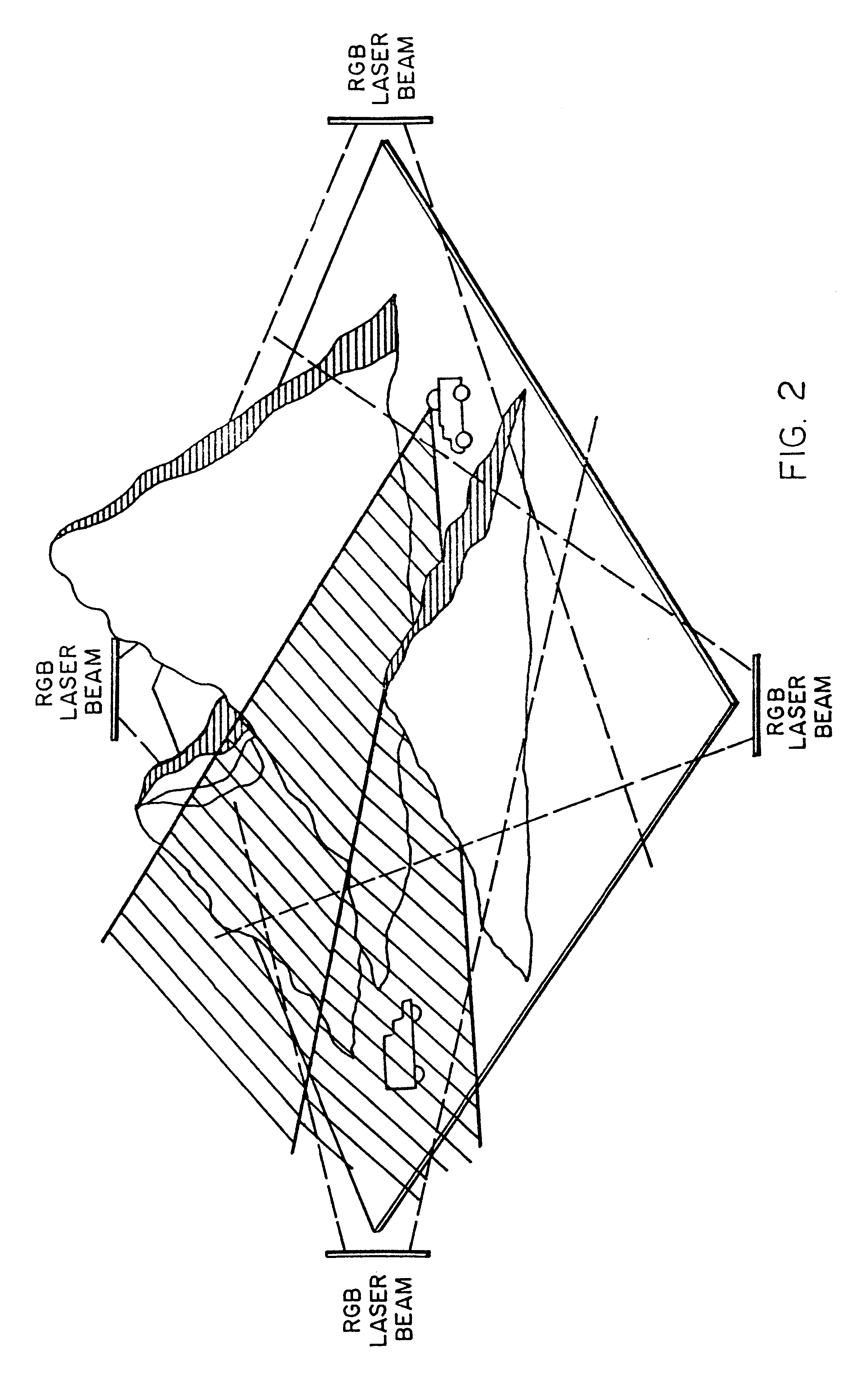High-resolution large-field-of-view three-dimensional hologram display system and method thereof
- Summary
- Abstract
- Description
- Claims
- Application Information
AI Technical Summary
Benefits of technology
Problems solved by technology
Method used
Image
Examples
Embodiment Construction
Referring to FIG. 1, it will be seen that a display system in accordance with the present invention comprises a three-channel binary phase, spatial light modulator, an achromatic HOE, an input lens, a mirror, a vertical scanner, a horizontal scanner, an output lens and an Aerogel display medium. The holographic source shown in FIG. 1 comprises a computer generated hologram (CGH) from a host computer. The CGH is used as a modulation signal to a set of spatial light modulators through which respective red, green and blue reference laser light is transmitted. The spatial light modulators are liquid crystal devices having a two-dimensional array of individually modulated pixels, each capable of numerous discrete levels of transmissivity depending upon the modulation level.
The output of the three channel spatial light modulator is applied to an achromatic hologram optical element (HOE) which is, in effect, an optical combiner providing a unitary colored holographic optical signal with a ...
PUM
 Login to View More
Login to View More Abstract
Description
Claims
Application Information
 Login to View More
Login to View More - R&D
- Intellectual Property
- Life Sciences
- Materials
- Tech Scout
- Unparalleled Data Quality
- Higher Quality Content
- 60% Fewer Hallucinations
Browse by: Latest US Patents, China's latest patents, Technical Efficacy Thesaurus, Application Domain, Technology Topic, Popular Technical Reports.
© 2025 PatSnap. All rights reserved.Legal|Privacy policy|Modern Slavery Act Transparency Statement|Sitemap|About US| Contact US: help@patsnap.com



